Art is for the Spirit: Farewell, Hara Museum of Contemporary Art 1979-2020
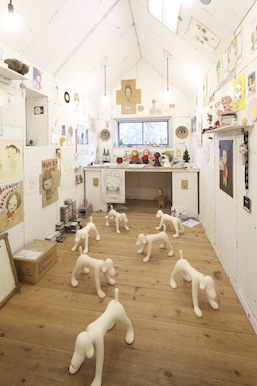
The Hara was once a private family residence. When the land was purchased by Rokuro Hara in the late 1800s, the property included a great deal of surrounding land, which allowed for multiple buildings on the same property. Rokuro’s daughter and her husband built a new home on the property in 1939. The commissioned architect, Jin Watanabe, designed it in a Modernist, Art Deco style featuring curved walls and turrets, parquetry floors and many windows looking out over the garden.
After surviving bombing raids in World War II, the building was handed over to US forces in the postwar occupation until 1959. Occupiers left it “in pretty bad shape, crumbling and unfit for use.” After years of displacement, the building was returned to the Haras, but was left empty for 20 years as the younger generation decided what to do with it.
Rokuro Hara’s grandson and heir, Toshio Hara, is the founder of the museum and current chairman of Foundation Arc-en-Ciel, the museum’s establishing body that drives the collection. In the 1950s and ‘60s, Toshio studied in the US and travelled the world. He met international art collectors and experienced a variety of museum spaces, including some that had been converted from private residences to display personal collections. Upon returning to Japan and seeing the lack of institutions devoted to contemporary art, this became the inspiration for establishing a museum in the empty house.
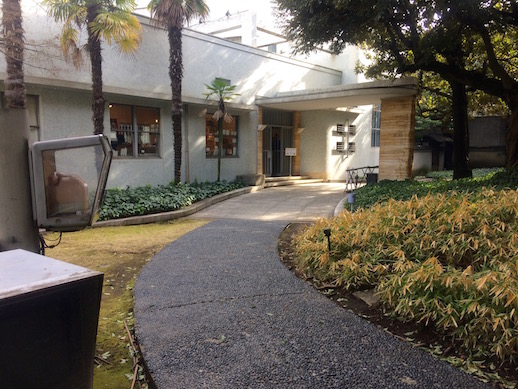
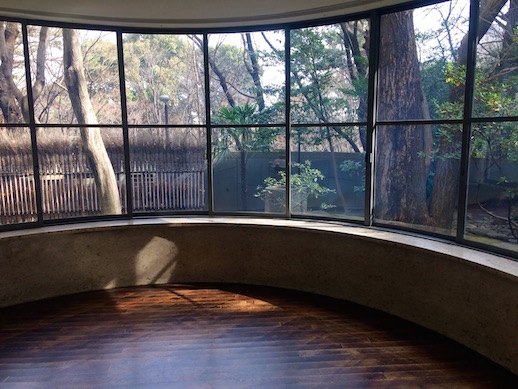
Besides the architecture, the rooms and spaces of the museum facilitate unique and intimate displays often placed in dialogue with the built-in permanent collection works found throughout the building and in the garden. A visit to the Hara never begins without encountering Keith Sonnier’s pink public telephone and television set, Aesthesipol I (1982), located near the main entrance. Apparently, the phone still works: a museum staff member admits she has used the telephone’s number to surprise some passers-by. The round bay window in the ground-level gallery has been looking over Hiroshi Sugimoto’s Art Brooms (Kaerinagaki) since 2012, on the occasion of his “From Naked to Clothed” exhibition. Lee Ufan’s Relatum (1991), consisting of four rocks and a large iron slab, is one of many other pieces to experience in the museum’s manicured lawns.
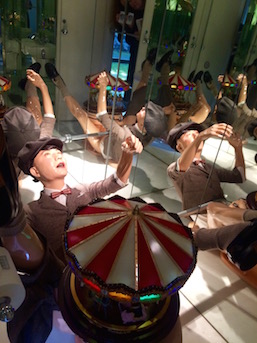
The museum’s character and history have also been the cause of its impending closure. According to the Hara’s press statement, the building’s aging structures and its lack of accessibility for all visitors have prompted the move to Hara Museum ARC in Gunma by the end of next year. The ARC is Hara’s annex: it’s a large wooden building designed by Arata Isozaki in the late 1980s. Holding four gallery spaces, including a specially designed pavilion for the Hara Rokuro Collection of historical Japanese and Chinese art, the site also stores approximately 1,000 works of contemporary art from the main Hara Museum Collection.
In the recent interview with Watanabe, she expressed her own personal sadness at closing the Shinagawa chapter of the museum’s history. “I’ve worked here for 25 years and it will be a difficult change.” Watanabe has overseen three international touring exhibitions, numerous visiting artists’ exhibitions, as well as managing the Hara’s membership program.
As a private museum, the Hara isn’t obligated to give the same political and financial justifications as government-run institutions. In this regard, it has paved its own way. Since the beginning, it has been an unofficial ambassador of contemporary art both domestically and internationally. “Its goal is not merely to show art but to provide a venue for the creation of new values,” Hara once described.
When asked about the influence of the Hara, and how it is seen by other museums, Watanabe said it would be difficult to measure the impact. “After all these years, there are just so many artists we’ve worked with. Some, like the Hawaiian artist Jason Teraoka, were first shown in Japan here. And over the years we have left a mark on overseas museums and projects, too.” On the topic of how the Hara is perceived, “other museums see us as different. Even though there are many more private contemporary art museums now than when the Hara first began, how can you compare a huge place like the Mori Art Museum to us?”
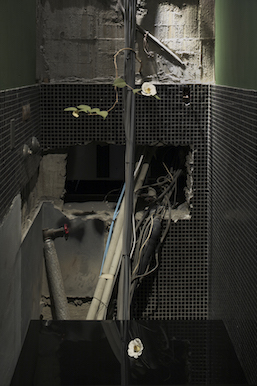
In the lead-up to the Hara’s closure, programing has included two “re-visits” of past exhibitions. One was Yasumasa Morimura’s “Rembrandt Room” (1994 and 2013) and the other is its current exhibition, Sophie Calle’s “Exquisite Pain” (1999 and 2019). Both exhibitions feature series that belong to the Hara Museum Collection. 2018 also saw the first collection exhibitions curated by Hara himself, as he selected personal highlights from almost four decades of collecting. The 2019-20 exhibition program is yet to be fully released, but staff suggest more reflections on the permanently installed art works is a strong possibility.
Without a base in Japan’s largest capital city, will the museum be able to continue its aims of international exchange remotely? Watanabe admits it will be a challenge, but not impossible. In a 2014 interview, Hara expressed his great pleasure in the totally unexpected when thinking about the future of art: ‘The art we deal with is extremely individualistic and reflective of the society around it. The many ways art can change depends on the societal changes that occur in each era.’
Watanabe continued, “I hope as many people as possible come and visit this place before it closes. People ask if we will have a big closing event, but it’s not really our style. There will of course be another two years’ worth of exhibitions to come as well. While we plan on having lots of events to attract our audience, I think people should also come in their own time and visit at their own pace.”
Hara Museum of Contemporary Art (Tokyo) is showing Sophie Calle’s Exquisite Pain: From the Hara Museum Collection through March 28. This exhibition is eligible for admission discounts with the TAB and MuPon apps.
* “Art is for the spirit!” quote is from Toshio Hara, 2014
Emily Wakeling
Emily Wakeling



